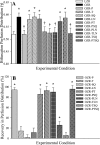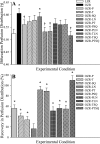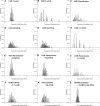Spatial heterogeneity in skeletal muscle microvascular blood flow distribution is increased in the metabolic syndrome
- PMID: 21775645
- PMCID: PMC3197467
- DOI: 10.1152/ajpregu.00275.2011
Spatial heterogeneity in skeletal muscle microvascular blood flow distribution is increased in the metabolic syndrome
Abstract
Previous studies have demonstrated that the metabolic syndrome is associated with impaired skeletal muscle arteriolar function, although integrating observations into a conceptual framework for impaired perfusion in peripheral vascular disease (PVD) has been limited. This study builds on previous work to evaluate in situ arteriolar hemodynamics in cremaster muscle of obese Zucker rats (OZR) to integrate existing knowledge into a greater understanding of impaired skeletal muscle perfusion. In OZR cremaster muscle, perfusion distribution at microvascular bifurcations (γ) was consistently more heterogeneous than in controls. However, while consistent, the underlying mechanistic contributors were spatially divergent as altered adrenergic constriction was the major contributor to altered γ at proximal microvascular bifurcations, with a steady decay with distance, while endothelial dysfunction was a stronger contributor in distal bifurcations with no discernible role proximally. Using measured values of γ, we found that simulations predict that successive alterations to γ in OZR caused more heterogeneous perfusion distribution in distal arterioles than in controls, an effect that could only be rectified by combined adrenoreceptor blockade and improvements to endothelial dysfunction. Intravascular (125)I-labeled albumin tracer washout from in situ gastrocnemius muscle of OZR provided independent support for these observations, indicating increased perfusion heterogeneity that was corrected only by combined adrenoreceptor blockade and improved endothelial function. These results suggest that a defining element of PVD in the metabolic syndrome may be an altered γ at microvascular bifurcations, that its contributors are heterogeneous and spatially distinct, and that interventions to rectify this negative outcome must take a new conceptual framework into account.
Figures








References
-
- Aboyans V, Lacroix P, Criqui MH. Large and small vessels atherosclerosis: similarities and differences. Prog Cardiovasc Dis 50: 112–125, 2007 - PubMed
-
- Ali MI, Ketsawatsomkron P, Belin de Chantemele EJ, Mintz JD, Muta K, Salet C, Black SM, Tremblay ML, Fulton DJ, Marrero MB, Stepp DW. Deletion of protein tyrosine phosphatase 1b improves peripheral insulin resistance and vascular function in obese, leptin-resistant mice via reduced oxidant tone. Circ Res 105: 1013–1022, 2009 - PMC - PubMed
-
- Baker M, Wayland H. On-line volume-flow rates and velocity profile measurements for blood in microvessels. Microvasc Res 7: 131–143, 1974 - PubMed
-
- Barbee JH, Cokelet GR. The Fahraeus effect. Microvasc Res 3: 6–16, 1971 - PubMed
-
- Bassingthwaighte JB, Liebovitch LS, West BJ. Intraorgan flow heterogeneities. In: Fractal Physiology. New York: Oxford University Press, 1994, p. 236–262
Publication types
MeSH terms
Grants and funding
LinkOut - more resources
Full Text Sources
Medical

